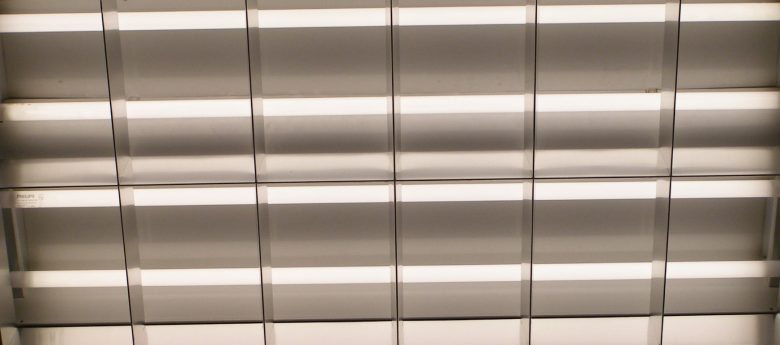Fluorescent Lamp Recycling at Medical Centers

Everyday medical facilities face numerous compliance challenges from federal and local agencies all with an eye on patient and staff safety. As a result, the disposal of something as mundane as lighting, which can vary from room to room and floor to floor, is often overlooked.
While fluorescent lamps, high intensity discharge bulbs (HID) and sodium lighting provide strong, consistent illumination for a number of applications, all of them contain mercury that if allowed to become airborne and enter the environment can be harmful. However, there seems to be some confusion among facility managers and administrators as to what it actually means to properly dispose of mercury-containing bulbs.
Many facilities are not aware that they are breaking the law if they dispose of the bulbs in dumpsters. If discovered, the Environmental Protection Agency (EPA) can levy fines and report violations at facilities that fail to properly dispose of fluorescent lamps properly.
Here we’ll help you assess the needs of your facility, examine available disposal options and weigh the pros and cons of each.
Where to Begin?
Assess the Facility
Gathering the appropriate information will help managers assess their medical center and determine what type of recycling services are required to properly manage lamp disposal. Below are a series of questions that will help determine your needs.
- How many fluorescent lamps are in your facility? Where are they located?
- How often do you re-lamp?
- How many fluorescent lamps are you disposing of each month? Each year?
- What types of fluorescent lamps do you buy? Are they energy-efficient lamps?
- How are spent lamps handled and stored?
- Do all employees know what to do if a fluorescent lamp burns out or breaks?
- Is the organization in compliance with all hazardous-waste regulations?
Select a Recycler
There are numerous lamp-recycling companies that operate in the United States, but as with any other service, they are not all created equal. Facility managers are encouraged to audit the vendors under consideration to verify that their permits, recycling technologies, transportation operations and bookkeeping practices meet all state and federal regulations.
Additionally, some recyclers manage other universal waste streams, such as batteries, electronics and medical waste, so be sure to ask the vendors about any other services they provide in the event you can combine recycling contracts.
Best Practices
When lighting burns out or is replaced in a lighting system retrofit, facility managers typically have three options for recycling them: mail-in boxes or containers, a pickup of intact lamps in bulk quantity, or crushing lamps for storage and eventual pickup.
Mail-In Boxes
The mail-in box option offers facilities the flexibility to mail small quantities of spent bulbs in EPA-compliant boxes to material recovery facilities for processing. While containers will vary widely, many utilize a combination of cardboard to hold the lamps and a plastic liner to contain mercury vapor in the event of breakage.
While probably the most common method of recycling lamps, the mail-in box can be contracted through recycling providers such as TerraCycle Regulated Waste, Waste Management and Veolia. Simply order a container, fill it with spent lamps and ship it to the designated recycling center using the included prepaid mailing label.
However, it is important to note that this option is intended for facilities that are less than 150,000 square feet and might not meet the needs for large producers of lighting waste.
Bulk Pick-Up of Intact Lamps
Facilities over 150,000 square feet in size with ample storage space might want to consider bulk pickup of intact lamps. This option requires facilities to retain spent lamps until they have accumulated enough to fill a truck, at which time they arrange for bulk pickup and disposal.
While a viable solution, and a service that is available through recycling providers like the companies mentioned above, a few key limitations should be considered. The EPA enforces a one-year legal limit on accumulation of universal waste which starts at the time the spent bulb is removed from the lighting fixture. So, if it takes a period longer than a year to accumulate the required amount of waste to warrant the cost of a bulk pick-up another solution should be considered.
Additionally, storage of the lighting waste for an extended period significantly increases the odds of an accidental mercury release and potential exposure to facility occupants and staff. Lastly, this option requires a large amount of space to warehouse the spent lighting – space that might be better utilized though therapeutic or administrative purposes.
Lamp Crushing
A lamp crushing machine quickly and efficiently crushes linear bulbs while separating the mercury and segregating the aluminum fixtures, glass tubing and other materials, allowing them to be reclaimed for reuse. This option is the ideal solution for facilities over 150,000 square feet and those that produce large amounts of lighting waste but do not have ample space to store it.
By compacting spent lamps with a lamp crusher, facility managers significantly reduce the labor associated with the proper packaging of the waste in advance of shipping or bulk pick-up, minimize recycling costs and eliminate the storage space required from warehousing the spent bulbs.
Leveraging a Facility Lamp Recycling Program
Many facility managers hear the word “sustainability” and immediately think it means an extra cost to them. However, investing in responsible disposal and recycling practices ultimately cuts overall costs, improves employee safety and keeps the facility EPA compliant. With healthcare inherently scrutinized by EPA inspectors, it makes good sense to incorporate a proactive fluorescent lamp disposal plan and minimize the mercury risk that fluorescent lighting poses to an efficient, safe workplace and a safe environment.
Bobby Farris is General Manager at TerraCycle Regulated Waste.
